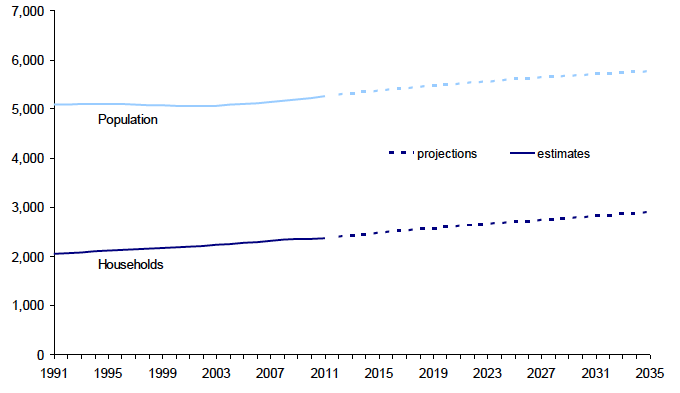Key Scottish Environment Statistics 2012
This publication aims to provide an easily accessible reference document which offers information on a wide range of environmental topics. It covers key datasets on the state of the environment in Scotland, with an emphasis on the trends over time wherever possible.
This document is part of a collection
Population and Households: 1991-2035
Population/Households (thousands)

People and households are important consumers of energy and water, and therefore have implications for the environment. The population of Scotland declined steadily through most of the 1980s, followed by small increases in the seven years up to 1995. The population then decreased to 5.05 million in 2002, but it has since increased to 5.25 million in 2011.
The latest projections indicate that the population will rise by 10% to 5.76 million in 2035. This trend is consistent with the overall UK population, which is also projected to increase but at a greater rate.[1]
The number of households rose by 325,000 (16%) between 1991 and 2011, reflecting the fact that household structures are changing, with fewer people per household. Projections based on 2010 figures suggest that by 2035, the number of households in Scotland will increase by 22% to 2.89 million. This will contribute significantly to the demand for housing, not all of which can be accommodated on previously developed land.
In 2007, the Scottish Government set a target in their Economic Strategy[2], to match average European (EU15) population growth over the period from 2007 to 2017. The annual population growth rates for Scotland and EU15 in 2010/11 were 0.63 and 0.38 per cent respectively. So, for the second year in a row, the population of Scotland grew more than that of the EU15.[3]
Source: National Records of Scotland / Metadata - Population/Households
Contact
Email: Sandy McPhee
There is a problem
Thanks for your feedback